Psychiatric disorders are mental, behavioral, or emotional disorders that present great variation in the manifestation and impairment range they cause. These disorders are known to be especially hard to diagnose for a variety of reasons, such as the novelty of the psychiatric genomics field, which studies the role of genetics in psychiatric conditions, and the heterogeneous nature of the patient population. A clear example of heterogeneity, in this case, would be the wide range of symptoms presented in autism spectrum disorder (ASD), where individuals can present with varying levels of social and cognitive difficulties. Some may require considerable support, while others function independently and excel in certain areas.
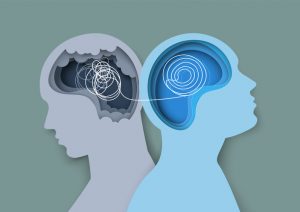
The genetic contribution of psychiatric disorders is evidenced by the higher rates of diagnosis among relatives of individuals with diagnosed mental illness. Epidemiological studies have provided evidence that even though there are many different risk factors, genetic inheritance has a huge impact on the appearance of psychiatric disorders 1.
Genome-Wide Association Studies (GWAS), focus on analyzing population’s genomes to identify genetic markers associated with diseases. These studies have facilitated the identification of DNA variants linked with these conditions. Despite the high heritability of most disorders, few reproducible genetic risk factors have been established through linkage analysis and candidate gene studies. Multiple efforts are being made to increase sample sizes and pay more attention to unique families and rare variants to create more comprehensive and inclusive genomic studies related to psychiatric disorders.
The evidence for heritability collected thus far has enabled the development of studies that incorporate gene transfer alongside investigations of brain function, particularly examining the cellular and molecular mechanisms involved in neuronal development, plasticity, and degeneration. Gene therapy approaches have also been employed in animal models for different psychiatric disorders such as drug addiction, psychoses, and affective disorders 2. However, these methods are often very invasive and would pose significant challenges if translated into human medicine.
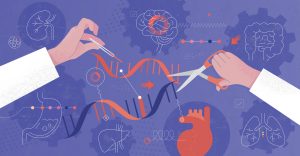
There are ethical concerns regarding fluctuations in symptoms over a lifetime and unpredicted secondary effects, as well as the ethical implications of the possibility of using these techniques for cognitive neuroenhancement. In the context of genomics, cognitive neuroenhancement may involve the use of genetic modification technologies or targeted therapies to improve cognitive functions in individuals without psychiatric conditions. Ethical issues arise regarding equity of access to these interventions and the potential for increased social pressure to enhance cognitive abilities in high-performance environments. For instance, the prospect of using gene editing technologies, such as CRISPR, to enhance intelligence or memory brings deep questions about the definition of “normal” cognitive function and the risks of aggravating social inequalities. This analysis aims to provide an overview of how genomics can aid in the treatment and prevention of psychiatric disorders while addressing the ethical concerns and challenges that accompany these advancements.
Current Efforts in Genomic Data Collection
The history of psychiatry and genomics started with observations of mental illness occurring in families. The field gained momentum with twin and adoption studies in the mid-20th century, which began to provide insight into the role of genetics in psychiatric disorders. A significant breakthrough occurred alongside the Human Genome Project, an international endeavor that mapped and sequenced the entire human genome for the first time. This project enabled researchers to identify specific genes and variations linked to mental health conditions 3.

While the Human Genome Project has facilitated the identification of risk factor genes and genetic loci associated with susceptibility to mental illness through linkage analysis, only a fraction of relevant genes have been identified. Analysis of thousands of more affected families and individuals is needed. Additionally, the predominance of studies conducted on European populations has limited the scope of this research, making it difficult to develop comprehensive and inclusive findings. In response to this issue, the U.S National Institute of Mental Health (NIMH) established the Ancestral Population Network (APN) to facilitate and accelerate data collection, enhance reproducibility, and improve genetic discovery for psychiatric disorders in non-European cohorts. This initiative is composed of seven different projects.
Some of these projects utilize blended genome exome (BGE) sequencing technology, along with both long-read and short-read whole genome sequencing (WGS), to characterize the genetic basis of various disorders, such as schizophrenia and psychosis. These studies examine diverse populations, including those from Africa, Korea, and Latin America, while also considering different age groups and genders. Examples of these projects are The Genomics of Schizophrenia in the South African Xhosa (SAXII), The Latin American Trans-Ancestry Initiative for OCD Genomics (LATINO), The Asian Bipolar Genetics Network (A-BIG-NET) and The Genomics of Autism in Latinx Ancestries (GALA). All these efforts aim to facilitate the exploration of genetic variations withing populations and to examine the shared genetic framework across different psychiatric disorders 4.
Gene Therapy in Animal Models
With the identification of genetic risk factors, the next logical step would be to explore the potential of gene therapy for treating psychiatric disorders. However, the fact that they exist does not mean that they follow a defined Mendelian inheritance model. While the possibility of monogenic mental health conditions cannot be ruled out, psychiatry diagnosis is not based on the regular system for characterizing and classifying disease. Instead, they are based on an international consensus of clinical phenomena or presentations that may well have different pathophysiologies involved.
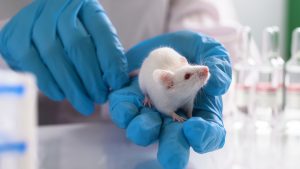
Altering gene expression in the brain can lead to changes in neurocircuitry and synapse development, which ultimately also affects behavior. Viral gene transfer strategies, consisting of introducing a gene into an organism’s cells through viral transduction, microinjection, or particle bombardment, have been introduced to understand brain function and have emerged as a possible therapeutic option.
In the 1990s, these techniques demonstrated the ability to condition rodents to develop a taste or aversion to cocaine. More recently, similar approaches have shown that this is also promising for reducing ethanol addiction. Another example includes the elimination of serotonin binding receptors in the brains of mice leading to depression-like behavior, and reversing these effects when expression is restored. Even researchers studying complex conditions like dementia and schizophrenia, for which creating animal models is particularly challenging, have expressed optimism about viral gene transfer techniques and their potential for therapy 5.
One of the main uses of the gene transfer technique also has to do with the improvement of cognitive skills in models of dementia and Alzheimer’s. Studies have been carried out on the modification of genes involved in learning and memory, such as the phosphorylated CREB (pCREB) gene in mice, and other genes involved in synaptic signaling pathways involved in memory formation (Bartolotti, 2026). Other fascinating results include cognitive improvement in maze tests in a mouse model of Alzheimer’s after assisted expression of neprilysin, a major degrading enzyme, for six months 6.
While this research is still in development and currently focuses on discovering molecular mechanisms involved in pathogenesis, there remains hope that these techniques could one day be utilized as therapeutic interventions.
Ethical Implications of Genomic Interventions
As promising as gene transfer sounds as a potential therapeutic strategy, and as effective as it has been for creating animal models of psychiatric conditions, concerns remain about the translation of these techniques to human subjects and the ethics behind these methods. Studies done on hallucinations and schizophrenia provide some evidence that the genetic component of the underlying pathology is probably more related to gene expression imbalance than to structural changes in gene products 7. Without a doubt, this type of condition cannot be reduced only to its genetic component, as it is highly heterogeneous, and the environmental factors play a huge role. It is extremely important to know how to recognize the different subtypes and recognize their complexity.

Considering all of these factors, the various manifestations of these conditions in different individuals complicate the implementation of such therapies. Moreover, the risks and benefits must be carefully weighed. These techniques are incredibly invasive and carry significant risks such as non-specific toxicity and inadequate cell specificity, despite the advances achieved in recent decades. We are essentially talking about the direct injection of modified viruses into the brain or using human stem cells.
Should this type of therapy reach the point of being accessible, policies need to be reinforced to make sure a safe and effective system is in place to guarantee patient informed consent. Individuals must fully understand the risks, benefits, and potential long-term implications of these therapies before making a decision. This includes clarity about what the procedures entail, possible side effects and how the therapy may affect other aspects of their health 8.
Another point that should be explored in this case, even before it is implemented, is the possibility of using techniques like this for neuroenhancement. As mentioned previously, at least in animal models, it has been proven that cognitive behavior can be improved with gene alteration techniques. If such interventions were to become available, not just to improve a disease, but to directly modify healthy people, they would probably be very popular. Especially in a society that values productivity so highly and considers skilled workers a resource that can be used to compete against other companies or nations. Given the competitive nature of human beings, this practice would be greatly encouraged, potentially spiraling out of control and leading us to multiple ethical implications 9.
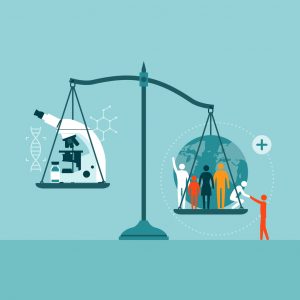
One significant concern is how technology might lead to increased stigma surrounding mental disorders. If gene therapy Is perceived as a way to “weed out” certain conditions, it could reinforce the notion that mental health issues are inherently undesirable, deepening social stigma. This stigma can have detrimental consequences for individuals, as it has been shown to worsen symptoms and reduce the likelihood of getting treatment 10. Moreover, important questions also arise about where to draw the line before these practices are considered eugenics, the use of genetic editing for deliberated control of desired genetic traits. Does the pursuit of a “healthier” society inadvertently marginalize those with mental conditions further?
Additionally, access to these treatments is likely to be limited to those who can afford them. Economic disparity could worsen existing inequalities, leaving lower-income communities without access to advanced therapies. Consequently, mental health conditions like depression, anxiety, and substance abuse may come to be viewed as “lower-income” diseases, further stigmatizing affected populations and perpetuating a cycle of discrimination.
The lines between prevention, therapy, and enhancement are blurred in general, and in fields like psychiatry, even the definition of a disease that can be cured is not clear. There are divided opinions regarding this technology, some leaning toward rejection and others toward enthusiasm. Resistance to new things is nothing that hasn’t been seen before in history, but there are valid concerns about the introduction of societal inequalities and the idea of seeing children as something that can be designed and manipulated. The risks and benefits need to be carefully evaluated, even if it seems too early to have this discussion. Just a few years ago, we could not have imagined the technological possibilities we have today; it requires wisdom to navigate the direction we are heading and to engage in the appropriate conversations about it. However, drugs and treatments are approved for valid reasons. If the possibility of using gene therapy to treat mental illness arises, we must also be careful that the regulations arising from these debates do not interfere with the purpose of the therapy, which is to improve the patient’s quality of life.
- National Academies of Sciences, Engineering, and Medicine; National Academy of Medicine; National Academy of Sciences; Committee on Human Gene Editing:
Scientific, Medical, and Ethical Considerations (February, 2017). Human Genome Editing: Science, Ethics, and Governance. Washington (DC): National Academies Press (US); 14. 6, Enhancement. Available from: https://www.ncbi.nlm.nih.gov/books/NBK447264/ ↵ - Thome, Johannes, Frank Hässler, and Vanna Zachariou. (September 2011)“Gene Therapy for Psychiatric Disorders.” The world journal of biological psychiatry: the official journal of the World Federation of Societies of Biological Psychiatry.
https://www.ncbi.nlm.nih.gov/pmc/articles/PMC3394098/#R15. ↵ - Cowan WM, Kopnisky KL, Hyman SE. The human genome project and its impact on psychiatry. Annu Rev Neurosci. 2002;25:1-50. doi:10.1146/annurev.neuro.25.112701.142853 ↵
- Gitik, Miri, Lora A. Bingaman, Laura M. Rowland, and Andrea Horvath Marques. “The NIMH Supports More Comprehensive and Inclusive Genomic Studies in Psychiatry.” World Psychiatry 23, no. 2 (May 10, 2024): 292–93. https://doi.org/10.1002/wps.21211. Bartolotti, N et al. “Reduced pCREB in Alzheimer’s disease prefrontal cortex is reflected in peripheral blood mononuclear cells.” Molecular psychiatry vol. 21,9 (2016): 1158-66. doi:10.1038/mp.2016.111 ↵
- Thome, Johannes, Frank Hässler, and Vanna Zachariou. (September 2011)“Gene Therapy for Psychiatric Disorders.” The world journal of biological psychiatry: the official journal of the World Federation of Societies of Biological Psychiatry.
https://www.ncbi.nlm.nih.gov/pmc/articles/PMC3394098/#R15. ↵ - Spencer B, Marr RA, Rockenstein E, et al. (November 2008) Long-term neprilysin gene transfer is associated with reduced levels of intracellular Abeta and behavioral improvement in APP transgenic mice. BMC Neurosci. 2008;9:109. doi:10.1186/1471-2202-9-109 ↵
- Lesch, K P. (July 1, 1998): “Hallucinations: Psychopathology Meets Functional Genomics.” Molecular Psychiatry 3, no. 4 278–81. https://doi.org/10.1038/sj.mp.4000440. ↵
- Hall, D. E., Prochazka, A. V., & Fink, A. S. (2012). Informed consent for clinical treatment. CMAJ : Canadian Medical Association journal = journal de l’Association medicale canadienne, 184(5), 533–540. https://doi.org/10.1503/cmaj.112120 ↵
- Thome, Johannes, Frank Hässler, and Vanna Zachariou. (September 2011)“Gene Therapy for Psychiatric Disorders.” The world journal of biological psychiatry: the official journal of the World Federation of Societies of Biological Psychiatry. https://www.ncbi.nlm.nih.gov/pmc/articles/PMC3394098/#R15. ↵
- Singhal, Nikhita. (March 2024 )“Stigma, Prejudice and Discrimination against People with Mental Illness.” Psychiatry.org – Stigma, Prejudice and Discrimination Against People with Mental Illness. https://www.psychiatry.org/patients-families/stigma-and-discrimination#:~:text=Stigma%20and%20discrimination%20can%20contribute,activities%20or%20trouble%20finding%20housing. ↵
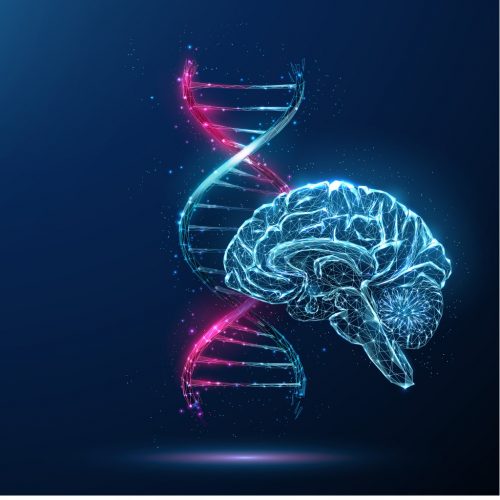

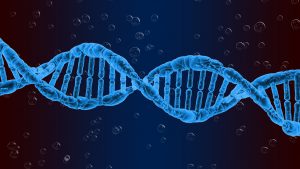
1 comment
Natalia De la garza
Thank you for sharing this insightful infographic. The visual presentation makes intricate information accessible, aiding in the comprehension of how genetics can influence mental health. This resource is valuable for both educational purposes and raising awareness about the genetic underpinnings of psychiatric conditions.